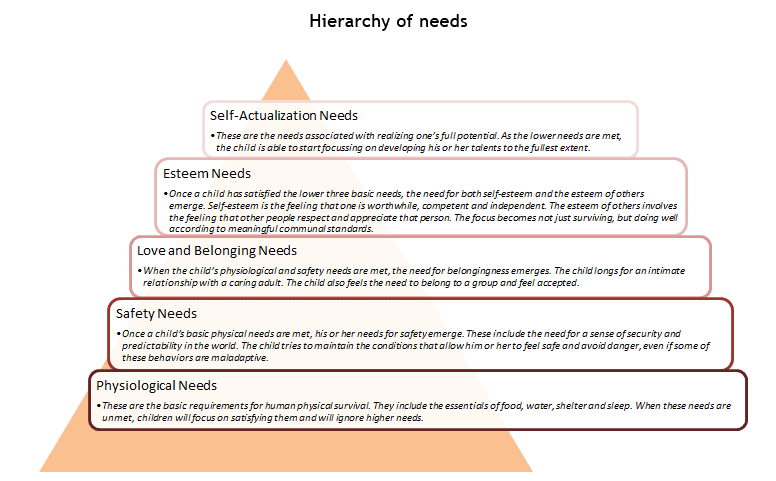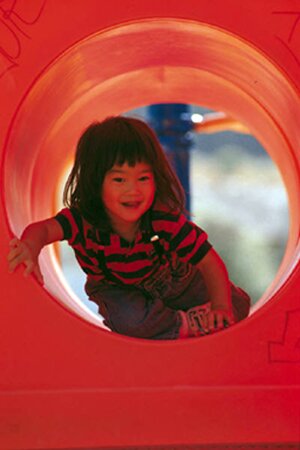A growing body of research reports and innovative programs identify promising practices responsive to the circumstances and learning needs of young learners and their parents especially during the pre-school and primary school years. See:
Playing with Rainbows: A National Play Program for At-Risk Refugee Children
Maslow’s hierarchy of needs is a useful framework for considering what supportive practices should be in place for refugee students. For many students in the initial stages of resettlement the basic survival needs, physiological and safety needs, take priority. Students will be more ready and able to learn when these needs are addressed.

Although school staff may feel that they should not be doing the work of social workers or therapists, there is an appropriate role for school staff in addressing students’ and families’ needs, so that learning and growth can take place. For example, if school staff recognize that students are facing basic survival needs, supportive responses may involve approaching charity groups and community agencies to help supply food, clothing, school supplies, etc. If school staff recognize that students are facing psychological distress, processes for accessing and referring students for health and counselling support should be pursued.

Teachers must deal with the child’s feelings and behaviours that occur in the classroom and work hard to support the development of the social skills that will lead to social inclusion and self-esteem. Schools and classrooms can provide essential supports to refugee learners by providing structured opportunities for children to understand their new surroundings and to learn acceptable behaviours. Children gain a sense of normalcy by establishing daily routines of school life, as well as participating in opportunities for expression and activity through art, sports and play.
For ideas about how to establish effective supportive relationships, see Building Connections to Support Social and Emotional Development in the Socio-Emotional Toolkit.
Play also has an important role in helping children settle into their new environment. For refugee children it provides opportunities to make sense of the world, gain confidence through positive interaction with peers and through exploring their environment. Children can express fears or relive anxious experiences in controlled and safe situations.
Read more about the importance of play for healthy child development. As an example, the arts program in Vancouver, specifically for newly-arrived refugee children uses movement, music and games to try to make the children feel comfortable and safe, and to communicate with them. See: Playful program helps refugee children feel at home .
For more tips on how to assist students to adjust to school, see Supportive Learning Environment in the toolkit.
The most promising practices to support refugee children and families include Cultural and Linguistic Competence, targetted Family Supports, and Family Literacy Projects.



